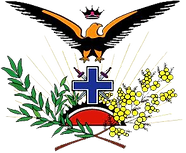
Mondays 4.30 - 7.30pm
Ivanhoe Girls Grammar
Ivanhoe, Melbourne, Victoria
Years 9 & 10
At Level 9 & 10, Years 9 & 10 students are able to:
-
Identify relevant information and ideas from spoken texts. They spontaneously participate in interactions related to a specific topic, and employ insights from previous language learning in oral interactions.
-
Effectively discriminate and use pronunciation, tone, intonation and metre. They initiate and maintain interactions to give and receive information and impressions.
-
Reproduce the main features of grammar in the language, and identify differences between English and other languages. They identify ways in which intentions and ideas are expressed differently in different languages. They communicate information in translation and interpretation activities, demonstrating careful consideration of the needs of the listener or reader, and sensitivity to cultural similarity and differences in meaning and intent.
-
Deduce relationships, mood, attitudes and social context from visual stimuli. They identify characteristics in the individual style of writers of the language in relation to the audiences and purposes for a particular text.
-
Read texts and effectively extract main ideas and detailed information for use in new contexts.
-
Read selected passages with fluency. They read for meaning and to communicate information. They apply their knowledge of accents and punctuation in both reading and writing. They express themselves in extended passages and linked paragraphs in print and electronic form.
-
Demonstrate an awareness of the extent and limitations of the language through creation of realistic applications of knowledge and skills in a range of situations. They demonstrate knowledge of the effect of word order and context on meaning.
-
Through accurate and context-sensitive language use, students demonstrate understanding of cultural influences on the ways people behave and use language. They use illustrative examples in the language to explain the differences and similarities between languages.
-
Demonstrate understanding of language as a complex system through strategies such as reflection, drafting, questioning linguistic relationships, observing and hypothesising. They test the validity of their understanding by referring to other speakers of the language, research and/or observation.
-
Contribute to discussions about the general concept of culture, and the relationships between cultures, including the effects of migration and travel, by presenting illustrative examples. They identify general cultural patterns that flow across specific settings and times. They recognise nuances in meaning and demonstrate an awareness of the dynamic nature of language through the language and mannerisms they use in interactions in a range of cultural settings. They demonstrate an understanding of variations in cultural perspectives between speakers of the language in different settings, by effectively interacting with members of the language community in Australia.
-
In the language, describe some of their present personal values and opinions, and compare them with previously held views.